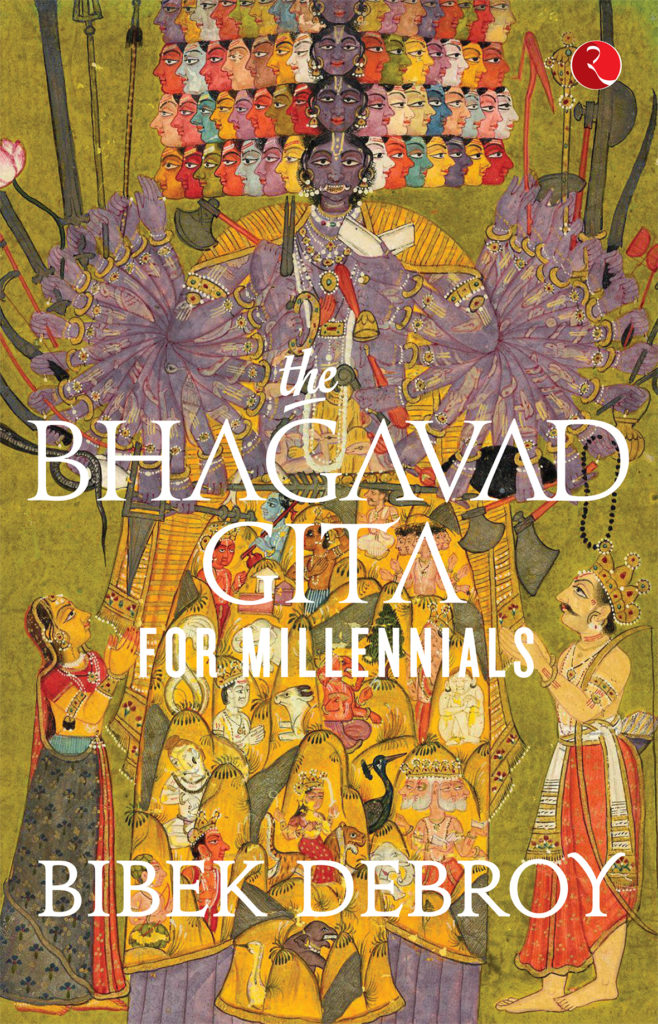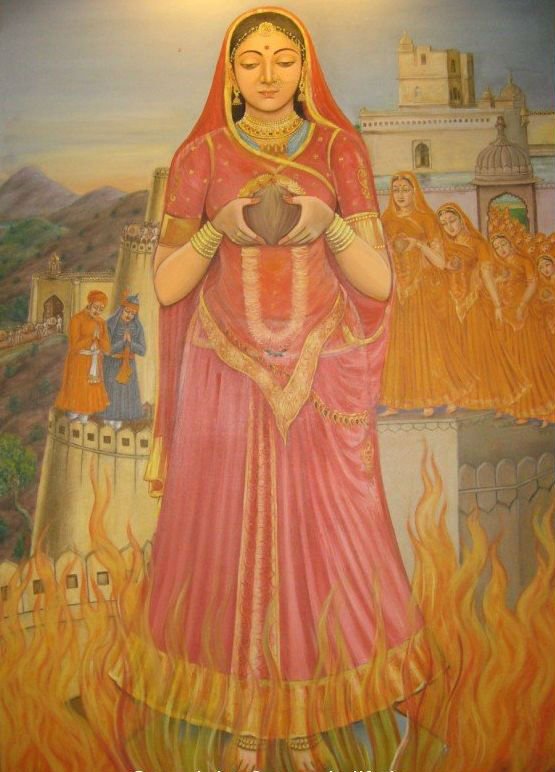- Visitor:105
- Published on:
The Bhagavad Gita for Millennials by Bibek Debroy – A Book Review
The Bhagavad Gita for Millennials by Bibek Debroy (2020) isn’t just yet another translation of the Gita, as per Jatayu. Read this interesting review to know more.

The Bhagavad Gita for Millennials by Bibek Debroy (2020) is an eminently readable and well written book. It was the word Millennials in the title that got my attention, as I was looking for a Gita book suited for college going youngsters and those in their twenties.
The author Bibek Debroy is an economist and Sanskrit scholar and the well-known translator of many Sanskrit texts including the complete Mahabharata. But this book is not yet another translation of the Gita, “not intended to be one, deliberately so”, as per the author. It is written in a refreshingly unique style. “To appreciate the Bhagavad Gita, one needs to understand Krishna. One needs to understand the broader context of the other texts. One has to recognize the beauty of the Sanskrit language. And most important of all, one has to comprehend one’s own self. Therefore, the book has taken a completely different tack, seeking to anticipate some questions the young might have about the Bhagavad Gita”, the author mentions at the end of the book (pp 203).

Through the introduction and the first and third chapters (The Mahabharata & Krishna as a Historical Person), the author gently prepares the reader for the next chapters that deal with the core Gita text. In these chapters, he deals with many basic questions regarding the dating of the text and the authorship, of Mahabharata as well as the Gita. He gives the summary of all scholarly opinions from historians and Indologists. In very few pages the author manages to introduce so many things starting from Vedas and Puranas, Genesis and growth of the Mahabharata text, manuscripts, BORI critical edition, Dwaraka archaeology, astronomical dating, commentaries etc. He elegantly summarizes the evidence on Krishna’s historicity, while stating his preference for the very logical and well researched view of M.R.Yardi. As per his conclusion, he gives 1400 BCE for the Kurukshetra war and then a gap of almost one thousand years between Krishna’s life and the composition of the Mahabharata (initial narration of by Vaishampayana) and the Gita. “it is easy to miss this important fact”, he cautions. These chapters are full of links and pointers to further material, creating more interest for inquisitive readers.
The second chapter Sanskrit and Poetry assumes the reader to be somewhat familiar with very basic Sanskrit, like CBSE 10th standard level and teaches how to read Shlokas, make meaning out of them and appreciate their beauty and how Sanskrit words are formed and used. In the end it also informs what one gains and loses while reading translations, making a strong case on why the Gita or any Sanskrit text must be read in the original to appreciate its richness.
The third chapter is titled The Bhagavad Gita Synthesis, which is also the title of a renowned book by M.R.Yardi. Here the author explains the structure of the Gita text and its chapters. He gives a brief but interesting introduction to the Six Darshanas (Nyaya, Vaiseshika, Sankhya, Yoga, Mimamsa and Vedanta), not in a textbook style but just taking them up one by one in course of the narration, interspersing with quotes from the Gita itself.
The fourth chapter (The Smriti background) deals with the Gita themes related to ethics, Four Varnas, duties and obligations etc. The author gives a good background of these topics with brief references to Manu Smriti and Dharma Shastras and explains how these concepts are interpreted in the Gita. The sixth and seventh chapters are titled ‘Who am I?’ and ‘What am I not?’. These illustrate all the important ideas in the Gita that are related to contemplation and Sadhana – viz. Atman, Yoga, Pranayama, Dhyana, Karma, Yagna, actions and their fruits, Sannyasa, Vairagya (dispassion) mind control, divine vs demonic qualities, three Gunas, etc. The eight, ninth and tenth chapters continue the philosophical discussion. Jivatman and Paramatman, Samsara, Ahamkara, Jnana, Bhakti are some of the key topics elucidated in these chapters. Stories and teachings from other texts are incorporated in the flow of the discussion beautifully. The stories of Dharma Vyadha, Satyakama Jabala, Ashtavakra and Janaka, Puranjana (from Bhagavata Purana), King Vikramaditya, Harishchandra and the story of Madalasa, Alarka and Dattatreya (from Markandeya Purana) are narrated nicely. In some cases, the author has chosen to give the direct translation of the Puranic text instead of telling the story in his own words, which gives the reader a feel of Puranic literary style. References are made to the writings of Adi Shankaracharya, Swami Vivekananda and Sri Aurobindo at places.
Overall, this book quotes about 175 Shlokas from the Gita, 25% of the total 700 Shlokas – not too much, not too little, but enough to give a good glimpse of the text. The Shlokas are not quoted in any linear order. They just keep coming in course of the subject matter being discussed. Each shloka is given in the Devanagari script, along with the padaccheda (splitting of the words) and anvaya (ordering of the words) of the Shlokas, followed by the English translation. If the reader carefully studies the Devanagari portions without skipping them, that will become a very good exercise in Sanskrit comprehension and increase his or her confidence to study Sanskrit texts in the original.
While it is certainly not a heavy read kind of book, it is also not a light or casual read. It demands the attention and the rigor of the reader all through. Based on my reading, I would highly recommend this book, not just for the said group, but for all ages, for all those who wish to get a gentle but scholarly introduction of the Gita. There are some nuggets and treasures to be discovered even for those who are already familiar with the Gita and have studied the text.
- 52 min read
- 0
- 0










